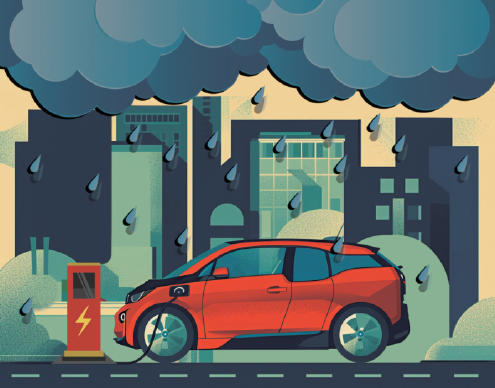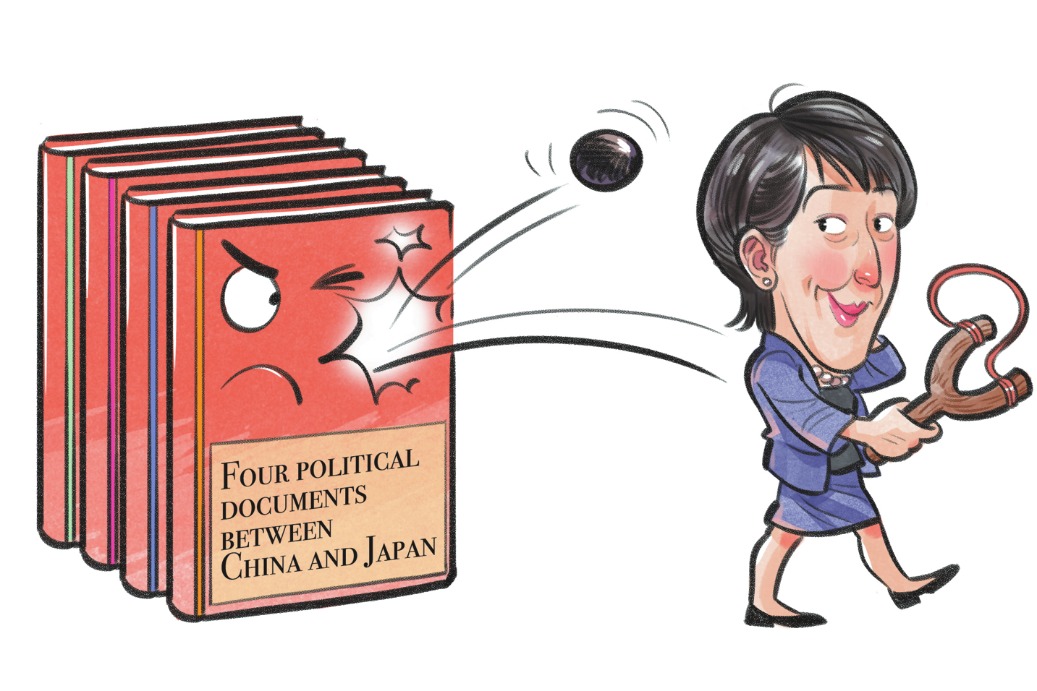Spare tariff brakes, step on the gas


Chinese and European EV companies should join hands to expand the market, drive down costs through technological innovation, and accelerate the green transition
After a nine-month anti-subsidy investigation into Chinese electric vehicle companies, the European Commission has announced provisional duties on imports of battery electric vehicles from China starting July 5. Over the next four months, the Commission will consult the European Union members, who will vote in early November to decide whether to impose definitive tariffs for a five-year period.
In essence, the EU tariff hike on Chinese EVs is an act of trade protectionism, following a surge in the global market share of Chinese EVs, something seen as a threat to traditional automakers in Europe and the United States.
According to data from the European Automobile Manufacturers' Association, in 2023, the EU exported 11,499 EVs to China, with a value of 852 million euros ($925 million);while China exported 438,000 EVs to the EU, with a value of 9.7 billion euros.
The share of Chinese-made EVs in the EU's EV market was 21.7 percent in 2023, with Chinese brands accounting for 7.6 percent. In 2020, these figures stood at 2.9 percent and 2 percent, respectively.
The European Commission's anti-subsidy investigation was not launched in response to a complaint by its domestic industry, but on its own initiative based on a threat of injury. Some EU member states, including Germany, Sweden and Hungary, as well as large European automakers, such as BMW, Volkswagen and Mercedes-Benz, are explicitly opposed to the policy, citing its potential negative impact on the global trade order, green transition and the interests of car companies operating in China.
By imposing hefty tariffs, the EU and the US are seeking to contain China's growth and exclude China from the global industry and supply chains. However, Chinese EV companies will not be stopped.
Chinese EVs are highly competitive globally in terms of technology and production capacity. Data from China's General Administration of Customs show that in 2023 China exported 1.77 million EVs, with a value of $41.8 billion, up 67.1 percent and 73.4 percent year-on-year, respectively. The momentum was sustained from January to May 2024, with the export volume and value growing 40.6 percent and 24.3 percent year-on-year. The target markets for Chinese new energy vehicles are increasingly diversifying, covering more than 180 countries around the world, according to the National Development and Reform Commission.
Furthermore, Chinese-brand automakers are gearing up to set up factories overseas. For instance, to enter the North American market, Chinese NEV and auto parts companies are planning to build factories in Mexico. Central and Eastern Europe is another favorable option thanks to the CEE's industry foundation and access to the entire European market. BYD is to launch its new energy passenger vehicle production base in Hungary, making it the first Chinese car manufacturer to do so in the EU. Chinese battery makers have started even earlier. Many of the major firms, such as CATL, have built plants in Europe.
Chinese NEV companies are now embracing a new stage of the "going global" strategy. By moving production overseas, they are no longer exporting products, but exporting production capacity and industry chains.
So far, the US and the EU policies to cut Chinese-made EVs going into their regions are unlikely to shake China's EV industry. Instead, they might boomerang on European carmakers investing in China, and are not going to help European domestic auto firms to increase their competitiveness in the EV sector.
Recently, Chinese Minister of Commerce Wang Wentao and vice-president of the European Commission Valdis Dombrovskis agreed to launch consultations over the anti-subsidy investigation into Chinese EVs. As the EC consults with its member states and relevant manufacturers over the next four months, China and the EU will have opportunities to further enhance communication, build mutual trust, and increase consensus to avoid broader trade frictions.
China and the EU are the world's largest EV manufacturers and consumers. Escalating trade friction between the two sides will not only jeopardize the industries in both markets, but also significantly disrupt the global automotive market and supply chain stability, harming the interests of all countries.
The automotive industry has long been a key trade and investment cooperation area for China and the EU. Thanks to complementary advantages in market and manufacturing, cooperation between the two sides is key to the rapid growth of their respective industries, which is a successful practice in achieving mutual benefits and win-win outcomes through globalization.
When it comes to the EV sector, complementary advantages still exist between the two sides, promising vast potential for cooperation. The International Energy Agency's Global EV Outlook 2024 report forecasts that global EV sales could reach around 17 million units in 2024, accounting for 20 percent of all passenger cars sold worldwide.
According to another report titled Racing to 2030: Outlook on the Development of Global EV Industry, released early this year by McKinsey and the think tank China EV 100, global passenger vehicles sales are projected to exceed 80 million units by 2030, half of which will be powered by new energy.
Moreover, China and the EU are the most important players in global climate change cooperation, and the global low-carbon transition cannot proceed without cooperation between the two.
The rapid growth and continued cost cuts of EV manufacturing can be attributed to the cooperation between China and the EU. As the world's largest EV markets, in 2023, China accounted for 60 percent of global EV sales and Europe, 25 percent; more than one in three new cars in China was electric, over one in five in Europe. In comparison, the US took up only 10 percent of global EV sales and only one in ten new cars was electric.
After years of technological advancement and market education, the prices of Chinese EVs are quite competitive when compared with the fossil-fueled ones, which is an important reason for the rapid increase in NEV penetration.
It is advised that Chinese and European companies should be encouraged to work together to expand the market, drive down costs through technological innovation, and accelerate the green transition.
The author is deputy head and researcher, department of research management and information services, China Center for International Economic Exchanges. The author contributed this article to China Watch, a think tank powered by China Daily.
The views do not necessarily reflect those of China Daily.
Contact the editor at editor@chinawatch.cn.


































